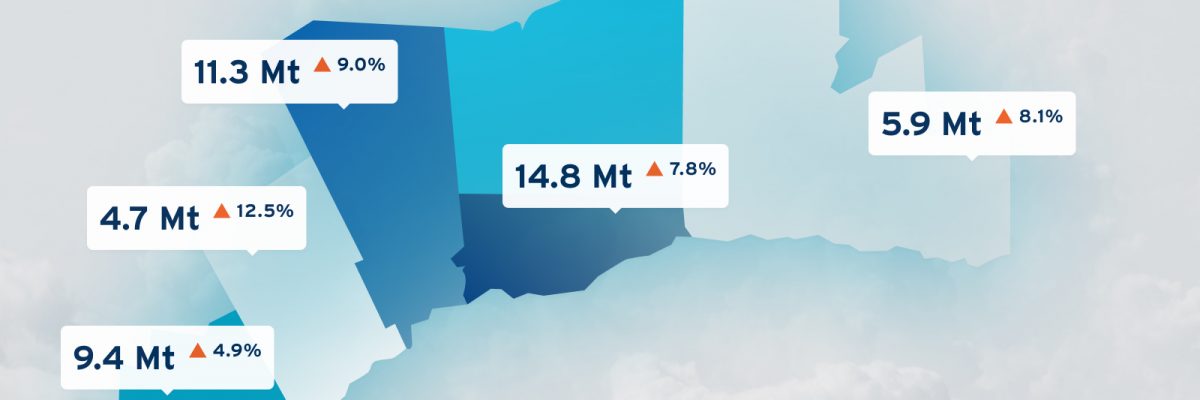(Toronto) Carbon emissions in the Greater Toronto and Hamilton Area (GTHA) increased by four million tonnes, or 8%, in 2022, the sharpest increase since 2015, The Atmospheric Fund (TAF) reported today.
TAF’s latest GTHA emissions inventory includes 2022 data and analyzes longer term emissions trends and progress against targets. The results stand in contrast to the annual 9% decrease needed to hit the region’s 2030 targets.
The inventory points to proven action that policymakers and corporate actors can start or accelerate to get the region’s emissions under control – beginning with stopping all new fossil fuel infrastructure.
“The solutions are right in front of us,” says Julia Langer, CEO of The Atmospheric Fund. “Our analysis shows progress on uptake of solutions like electric vehicles, energy efficiency and heat pumps, but policies and programs to support them must be bigger and faster. And we must not go backwards. Planning new fossil fuel infrastructure like gas plants and gas hookups have to stop. If you’re in a hole, the first thing to do is stop digging.”
TAF’s analysis of the data shows the 8% increase was driven by rising emissions in almost every sector: natural gas used for space and water heating in buildings, gasoline and diesel from more kilometres traveled by car, and fossil fuels used by industry, largely steel and cement manufacturing.
The spike in emissions from electricity generation is a growing concern. Emissions from electricity rose by 26% in 2022 due to increased use of natural gas-powered generating plants, which drove up the carbon intensity of the Ontario electricity grid overall.
These findings underscore the need for strong climate action across the board, including halting procurement of new fossil fuel infrastructure, or cities will not be able to meet their climate targets.
The report also highlights recommendations for policymakers and corporate leaders, a new regional climate policy tracker, and a review of effective carbon emission reduction policies and programs in place across the GTHA, such as retrofit programs that support energy efficiency and switching from gas heating to electric heat pumps.
Read the full report: http://carbon.taf.ca/
Highlights
- This one-of-a-kind inventory uses consistent methodology, data sources, and time frames across all six GTHA cities and regional municipalities from 2015-2022 to create a comprehensive picture of the sources and amounts of greenhouse gas emissions.
- Emissions (2022) come from: buildings (46%), transportation (36%), industry (15%), waste (3%), and agriculture (1%).
- Emissions from electricity rose by 26% in 2022 due to increased use of natural gas-powered generating plants.
- Building emissions and transportation emissions each increased 9%, rebounding to pre-pandemic levels.
- The report features local data for each of the six GTHA cities and regions and recommendations for policymakers at all levels of government.
Notes to editors
Carbon Emissions Inventory for the Greater Toronto and Hamilton Area 2022 reports on the major sources of emissions across the region starting in 2015: buildings, transportation, industry, waste, and agriculture. The inventory generally follows the guidelines established in the Global Protocol for Community-Scale Greenhouse Gas Emissions, covering Scope 1 and Scope 2 emissions. Inventory data in the region is available after a one-year delay, up to the previous year.
For more information
Julie Leach
Senior Manager, Campaigns and Communications
The Atmospheric Fund
jleach@taf.ca, 416 393 6382

